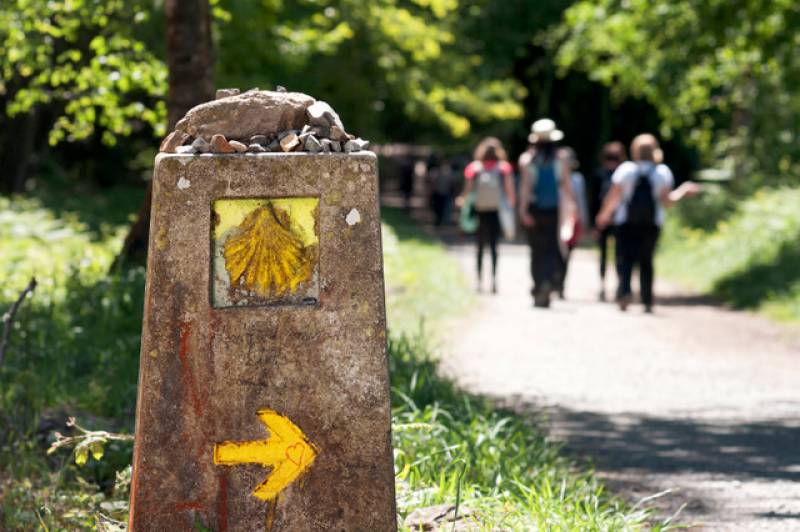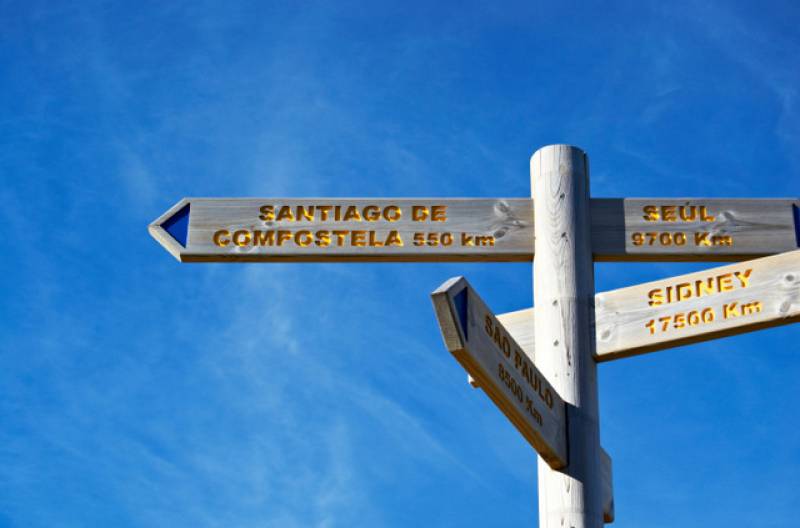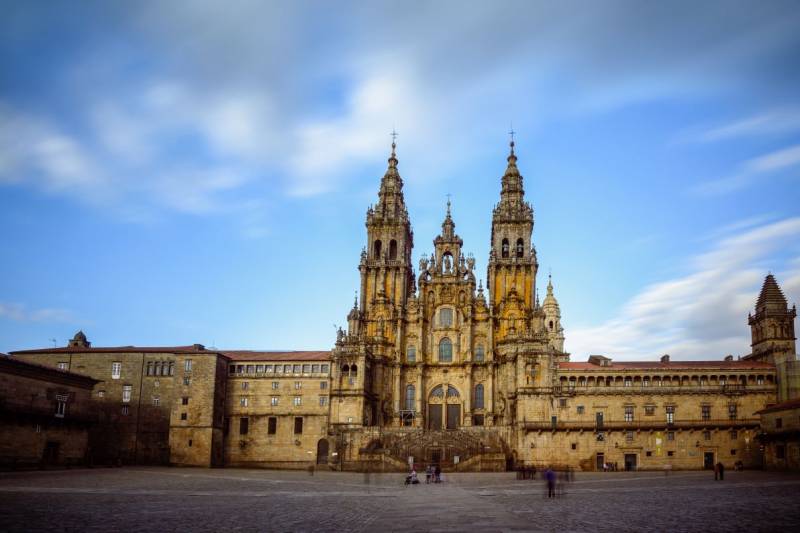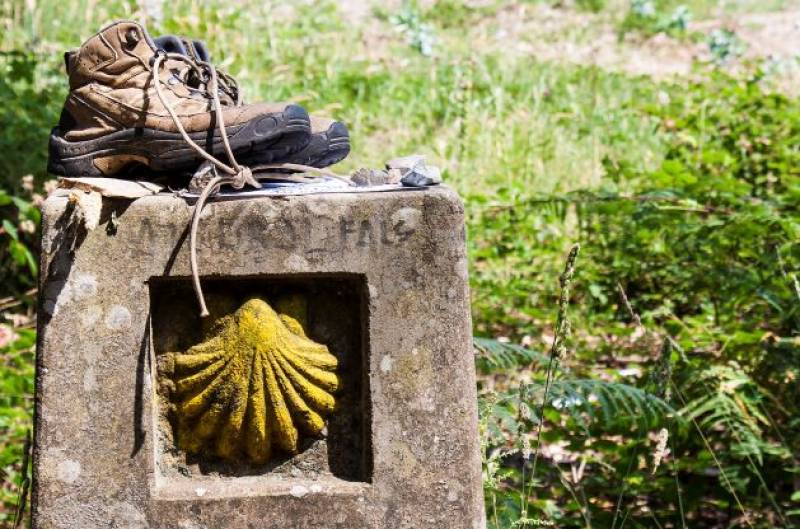Camino de Santiago in Spain: History and how to prepare to walk the St James Way pilgrimage hiking trail
Everything you need to know if you want to walk the Camino de Santiago in Spain, from what to pack to where to go

The Camino de Santiago, also known as the Way of Saint James, is a legendary pilgrimage hiking trail in Spain that captivates travellers from around the world. Steeped in history, culture, and spirituality, this remarkable route offers a profound journey of self-discovery for over 300,000 visitors every year.
So how did the Camino de Santiago start as a European pilgrimage route and what is its historical significance?
Discover more about the St. James Way in Spain, including the various routes available to walk and essential tips for anyone preparing to embark on this transformative adventure.
History of the Camino
 The Camino de Santiago holds a rich historical legacy dating back over a thousand years. According to tradition, the remains of Saint James the Apostle were discovered in Santiago de Compostela, Spain, in the 9th century. As news of this discovery spread, pilgrims began embarking on the arduous journey to pay homage to Saint James, resulting in the establishment of the pilgrimage trail.
The Camino de Santiago holds a rich historical legacy dating back over a thousand years. According to tradition, the remains of Saint James the Apostle were discovered in Santiago de Compostela, Spain, in the 9th century. As news of this discovery spread, pilgrims began embarking on the arduous journey to pay homage to Saint James, resulting in the establishment of the pilgrimage trail.The Cathedral of Santiago is the end point of the Camino (although there is an extra stretch beyond that which heads on to Finisterre on the Spanish coast, known as ‘The End of the World’). Tradition holds that anyone who reaches the incense-infused cathedral can pray to Saint James, and will have their wishes granted.
Another custom is for pilgrims who reach the cathedral to place their right hand in the smooth indentation of the famous stone column of the Pórtico de la Gloria, although this has now been banned by church authorities as it was wearing away the ancient pillar holding up the cathedral.

How long is the Camino and where is it?
The Camino de Santiago is an extensive network of trails spanning across Europe, converging on Santiago de Compostela, a city in the northwest of Spain. The most famous and traditional route, known as the Camino Francés or French Route, stretches approximately 780 kilometres (485 miles) from Saint-Jean-Pied-de-Port in France to Santiago de Compostela. However, there are numerous alternative routes catering to diverse preferences and starting points, including the Portuguese Way, the Northern Way, the Via de la Plata, and more.
Camino de Santiago as a tourist activity
 Today, the Camino de Santiago attracts a wide range of pilgrims, hikers, and cultural enthusiasts, and its popularity as a UNESCO World Heritage Site and the recipient of the European Cultural Itinerary designation has significantly contributed to its tourism growth.
Today, the Camino de Santiago attracts a wide range of pilgrims, hikers, and cultural enthusiasts, and its popularity as a UNESCO World Heritage Site and the recipient of the European Cultural Itinerary designation has significantly contributed to its tourism growth.It isn’t by any means just religious walkers who choose to make the journey to Santiago. All kinds of travellers are drawn to the trail’s unique blend of breathtaking landscapes, captivating medieval towns, enchanting villages, and historic monuments, not to mention the physical and mental challenge it represents of walking for hours on end, day in and day out.
Walking the Camino: How to prepare
Embarking on the Camino de Santiago requires careful preparation to ensure an enjoyable and fulfilling experience. Here are essential tips to consider:
- Physical Preparation: The trail demands physical endurance, so engaging in regular exercise and gradually increasing your walking distances is crucial. Consult with a healthcare professional before starting any new fitness regime.
- Route Selection: Research the various routes available and choose one that aligns with your preferences, timeframe, and fitness level. Consider factors such as scenery, difficulty, accommodation options, and cultural attractions along the way.
- Equipment and Packing: Invest in high-quality hiking gear, including sturdy footwear, lightweight clothing, a comfortable backpack, a hat, sunscreen, a first aid kit, and a reusable water bottle. Pack light to avoid unnecessary strain.
- Accommodation and Logistics: Plan your daily distances and book accommodation in advance, especially during peak seasons. Options range from pilgrim hostels (known in Spanish as ‘albergues’) where guests stay in shared rooms on notoriously flimsy mattresses, to cosier hotels and guesthouses. Familiarise yourself with baggage transfer services and transport options if needed.
- Cultural Awareness: Immerse yourself in the rich history and traditions of the regions you traverse. Learn a few basic Spanish phrases to facilitate communication with locals and fellow pilgrims.
- Mental Preparation: Walking the Camino can be a transformative journey, both physically and emotionally. Set personal intentions, be open to self-reflection, and embrace the camaraderie and spiritual aspects that the trail offers.
Overall, the aim is to enjoy yourself if you choose to walk the Camino. The Camino de Santiago is a remarkable pilgrimage hiking trail that offers many people an unforgettable life experience and a unqiue kind of walking holiday that blends historical significance with natural beauty and cultural immersion.
Undertaking this journey requires thorough preparation, but the rewards are immeasurable. Whether you are seeking adventure, spirituality or self-discovery, the Camino de Santiago beckons with open arms, ready to unveil its timeless wonders to all who embark upon it.
Loading
Sign up for the Spanish News Today Editors Roundup Weekly Bulletin and get an email with all the week’s news straight to your inbox
Special offer: Subscribe now for 25% off (36.95 euros for 48 Bulletins)
OR
you can sign up to our FREE weekly roundup!
Read some of our recent bulletins:
Discount Special Offer subscription:
36.95€ for 48 Editor’s Weekly News Roundup bulletins!
Please CLICK THE BUTTON to subscribe.
(List price 3 months 12 Bulletins)
Read more stories from around Spain:
Contact Spanish News Today: Editorial 966 260 896 /
Office 968 018 268

























